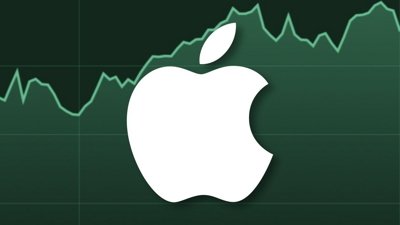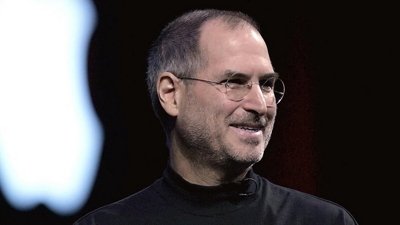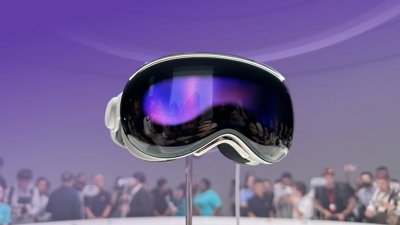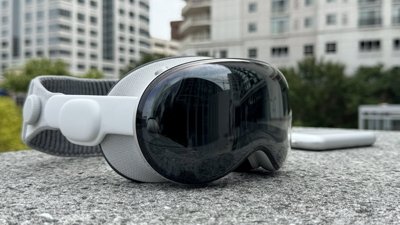Computerworld notes that in October 2005, more than 15 months before Vista hit the market, a column from the Wall Street Journal's Walt Mossberg outlining recommendations for buying a PC with the upcoming operating system in mind caught the attention of Windows software engineer Padmanand Warrier.
Troubled by a particular segment of the article, he fired off a link to the report to several of his colleagues, including then Windows group product manager Rajesh Srinivasan and development manager Richard Russell.
"You won't have to worry about Vista if you buy one of Apple Computer's Macintosh computers, which don't run Windows," Mossberg wrote in the highlighted section. "Every mainstream consumer doing typical tasks should consider the Mac. Its operating system, called Tiger, is better and more secure than Windows XP, and already contains most of the key features promised for Vista."
In Warrier's email, which was among hundreds made public this week as part of ongoing class-action lawsuit regarding Microsoft's distinction of a "Vista Capable" PC, the programmer pointed out that Mossberg had essentially equated the Mac to a "premium experience" in the market place and suggested the software giant should draw up a response.
Russell agreed, admitting in a reply that Microsoft had dropped the ball when it came to articulating Vista's advantages to both industry watchers and the general public.
"My takeaway from Walt's article is that we have failed to communicate Vista's value," he said, adding that the XP successor was being designed to run on a broad range of systems from budget PCs to high-end offerings which is something "Apple doesn't do."
Russell then reportedly turned his attention to Microsoft's plans to promote a number of existing PCs as "Vista Ready" under a new marketing campaign, a move that concerned him given that it could easily be misinterpreted by consumers.
"Vista Ready means that a PC will run Vista well — it doesn't mean the users will get a 'premium' experience — it never has meant that," he wrote. "There was some thinking and effort put into having a higher-tier Vista Ready logo, but this didn't fly with the OEMs. Also, if we spec Vista Ready too high, we will increase the already erroneous and popular perception that Vista is a pig with huge hardware requirements."
As a result, Microsoft would eventually rename the "Vista Ready" campaign "Vista Capable" in hopes of avoiding problems down the road. But when Vista launched a little more than a year later, consumers and industry watchers would nonetheless lambast the Redmond-based company for the software, which was largely regarded as a slower, more troubled version of Windows than the one it was replacing.
"I think we have made a mistake in equating 'running Vista well' with a 'premium experience," Russell told his colleagues.
It wasn't long after the early 2007 release of Vista that Apple took direct aim at the software's shortcomings. In a new series of its "Get a Mac" ads, the Mac maker drew attention to Vista's backwards compatibility woes and poked fun at Microsoft's move to market half a dozen versions of the same operating system.
In April of that year, Microsoft was hit with a class-action lawsuit from disgruntled Vista users who charged the company with marketing certain PCs as "Vista Capable" when they were only suited to run the most basic version of the operating system, which lacked support for such highly touted features as the new Aero interface.
Ongoing disclosures in the case, which is scheduled for trial next April, reveal that Microsoft tuned down the graphics requirements for Vista amid pressure from Intel.
 Katie Marsal
Katie Marsal






-m.jpg)






 Marko Zivkovic
Marko Zivkovic
 Malcolm Owen
Malcolm Owen


 William Gallagher
William Gallagher
 Amber Neely
Amber Neely
 Sponsored Content
Sponsored Content


-m.jpg)






66 Comments
Hmm... kinda reads like a treatise on how NOT to market an operating system.
You go, Microsoft. ...
I use it daily. It's not bad. Annoying at times, but very stable. Bad marketing, decent product. Of course its not as good as Leopard, but Leopard isn't perfect either, but is better and easier to use.
So there are known problems with Vista even to Microsoft, there are class-action lawsuits because Vista performs so terribly, and to remedy this, Microsoft is trying as hard as they can to rush Windows 7 to market, which is never a smart move. However, Microsoft itself is touting Windows 7 as being built upon the Vista foundation, and since everybody already hates Vista, how is Windows 7 going to change anything? This seems to be the beginning of a slow, painful end to a company that should have died long ago.
Doesn't renaming Vista fix it?
They just need to set some real requirements.. ram.. video.. and it would be ok.
People buying these 299 and 499 computers are getting just what they paid for.
Why the hell would they stick a label that reads, (Vista Ready) if they knew all along it wasn't, only the Geniuses At M$ft would thought of that, no wonder they also claim the Zune has a 30 hour battery life when you can't even get 15 out of it